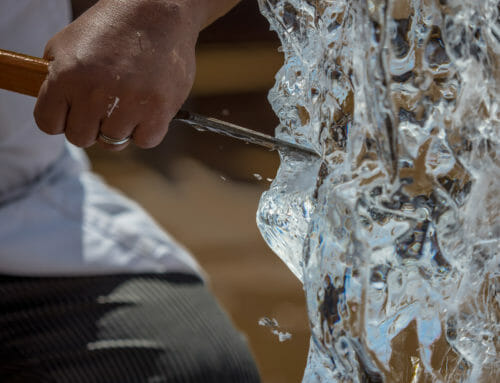Envision opening up a can of your favorite beverage. Now pour it over ice. Likely, the ice is crystal clear, the kind you see in the commercials in a tall glass. Frustratingly, when we try and make clear ice at home, we instead are left with annoying cloudy cubes. Why is this, especially when the water we pour in the tray is clear? While high-end restaurants serve crystalline ice and beverage commercials look refreshing, our home ice-cube trays or machines leave us scratching our heads.
Here are some reasons why our ice at home is cloudy – and some simple solutions on how to solve it!
It Starts With Chemistry
When you pour a glass of water straight from the tap, it is likely clear. This is due to the temperature of the room. When water is at room temperature, a lot of the water’s impurities will dissolve and remain invisible. When the water is frozen into ice, the impurities separate from the water and make themselves visible again.
Cloudy in the Middle
When you look closer, you’ll notice that the ice cube is clear on the outer edges while the cloudiness is centered in the middle. As we know, when water freezes it crystallizes. When this happens, the crystals tend to reject the impurities, pushing them towards the center as it freezes from the outside in.
In other words, the pure water doesn’t like the cloudiness, and neither do we!
Are “Impurities” Unhealthy?
Even though the word “impurities” sounds negative, it doesn’t necessarily mean something terrible is lurking in your water source. It just means the substances that show up in your water through either your city’s filtration system or your own. These particles usually form organically and are harmless. In fact, a lot of impurities are good for you – the most common being calcium or magnesium.
Another impurity often talked about is fluoride. Fluoride is found in your tap water as well and has been contested as both good for your teeth or harmful in large doses.
Getting Rid of Cloudy Water
There are a few ways to get that sought-after crystal clear ice. The easiest one is just to boil your water and let it cool for a couple of hours before pouring into your ice trays. If you have hard water (with high amounts of magnesium or calcium), you can then see the white residue fall from the boiled water to the bottom of the pot. This technique is also called “softening” as you are softening the hard tap water.
After you boil the water and let it cool, you are then welcome to pour it into your ice trays. However, if you want an extra precaution, many people filter it through a filtration system to strain out further impurities.
Another Culprit
It’s important to note that creating clear ice isn’t going to be a 100% “sure thing.” The culprits are usually tiny air bubbles. Bubbles frequently form within the ice when it’s frozen. This also happens due to the freezer temperature. Most home freezers are set at temperatures too cold, causing water to freeze before it’s settled.
In fact, ice makers who specialize in making clear ice freeze ice in layers to prevent the bubbles from forming.
Though there is not a foolproof method in getting ice crystal clear, filtering and boiling water is a good start. Your guests will marvel at your attention to detail, and you will have a new party trick up your sleeves for an additional touch of class.







Leave A Comment